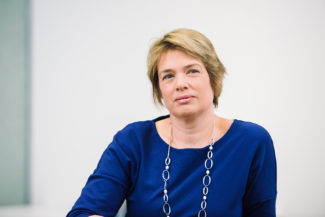A changing FRAND landscape?
CJEU referral in German car litigation and EU Commission IP action plan
11.12.2020
Late 2020 has brought some important developments in the FRAND landscape in Europe.
CJEU referral
Earlier this year we discussed the rapid expansion of connected technologies and how this might affect SEP licensing in the automotive sector (here). A key area of tension in the connected cars debate is where in the supply chain licensing should occur. Europe’s highest court has now been asked to provide some clarity on this subject, following a referral by the Düsseldorf Regional Court in a dispute between Nokia and Daimler (for German speakers, the referral can be found here). Ten detailed questions have been submitted (see here for an unofficial English translation of the questions) and the CJEU is now being asked to indicate (among other things) whether there is an obligation for SEP holders to license those who supply component parts for incorporation in more complex products.
This is immediately relevant to the numerous proceedings between Nokia and Daimler (and its suppliers such as Huawei) before regional courts in Düsseldorf, Mannheim and Munich for infringement of SEPs relevant to technology used in connected cars. According to reports, Nokia has not been prepared to offer a licence to just any party in the supply chain that has been willing to take a FRAND licence for the use of those SEPs when manufacturing components. As well as that immediate relevance, however, the responses of the CJEU are likely to have broader implications, not just for connected cars but also among others, for the many other devices that use standardised technologies for connectivity as part of the Internet of Things. The responses may even have implications for ‘traditional’ users of SEP licences in the telecoms industry – and may prove an opportunity for the CJEU to reflect on recent interpretations of its previous guidance on the application of competition law in the field of FRAND, in Huawei v ZTE (2015).
SEP holders argue that it is open to them to choose the level in a supply chain at which a FRAND licence is offered. Among other things, they take the view that it is more practical for that licence to be concluded at the end-product device level rather that at supplier level, as long as the end device manufacturer can use ‘have made’ rights under the licence to ensure that its suppliers will not be infringing when manufacturing for it. SEP owners see no reason why they should be obliged to structure licences differently, as long as access to the technology is effectively made available to all who need it to implement the standard.
Others disagree, arguing that the owners of SEPs are obliged by FRAND requirements to license their SEPs to anyone who requests a licence in order to implement the standard (this was also a central aspect of the recent FTC v Qualcomm litigation in the USA, although it was ultimately held that Qualcomm was subject to no such obligation). It is argued that by not choosing to license all-comers directly SEP holders cause unnecessary complexity in the supply chain.
It is also argued that such an approach can make new entry difficult, as only those who are already contracted to supply a licensed end product manufacturer will be certain that their activities in research and development, manufacturing and supply of components will not infringe. For the automotive industry in particular, end-user (or product) licensing goes against the established practice of upstream component providers being responsible for obtaining IP relevant licences, and of car manufacturers requiring their suppliers to indemnify them for any IP infringement. Alongside those practical matters, it is also said that licensing at the end–device level is attractive to SEP owners because it allows them to base royalties on a higher-value product (e.g. the car, rather than the telematics control unit, or the modem within that unit). This in turn has the potential to drive higher revenues (see here for further discussion on SEP selective licensing).
The Düsseldorf Regional Court’s questions are not limited to the issue of component-level licensing, since they also seek clarification of the Huawei v ZTE framework (see here). The CJEU has been asked about the obligations on SEP holders and implementers concerning, for example, the requirement for a patentee to make a pre-litigation licence offer, and the timeframe in which an implementer must respond to such an offer or a notice of infringement to prevent it being potentially exposed to injunctive relief. Behind these questions there may lie an implicit criticism by the Düsseldorf Court of the more relaxed view the national courts have taken in applying the framework (see our discussion of the UK approach here).
Given the breadth and importance (particularly to relief) of the questions referred it is possible that some German courts will suspend SEP cases pending a ruling from the CJEU. In the short term, this might make claimants more cautious about litigating in Germany where the opportunity to obtain a quick injunction following a finding of infringement of a SEP could be temporarily unavailable. For patentees considering alternative options England will be one potential venue, not least in view of the recent confirmation by the UK Supreme Court that courts in England can set the terms of global portfolio licences of SEPs and offer implementers held to have infringed a valid patent the choice between accepting that licence or being injuncted in the UK (see our report on the UK Supreme Court ruling here). As the UK will soon no longer be bound by judgments of the CJEU, English Courts will therefore (subject only to domestic competition law considerations) remain free to apply the Huawei v ZTE framework flexibly, irrespective of the conclusions of the CJEU in the Düsseldorf reference. The combination of these factors may encourage litigants to bring SEP licensing disputes to the English courts as a flexible and fairly speedy jurisdiction for a one stop solution to global SEP disputes.
Commission action plan
In other FRAND news, the EU Commission has recently released its action plan on intellectual property (here). Unsurprisingly, given what has been said above, the Commission is clear that SEPs will continue to play a significant role in the development of 5G and the Internet of Things, stating that more than 25,000 patent families for connectivity standards have now been declared to the EU standard setting organisation ETSI. The Commission notes that relatively new players, such as those in the automotive sector or supplying other connected devices, may not be as familiar with SEP licensing as those in the mobile communications sector and the Commission has advocated reforms to clarify the declaration, licensing and enforcement of SEPs.
Nevertheless, it is unclear whether any real changes will result from the Commission’s proposals. In the short term the Commission states that it favours industry-led initiatives to “reduce frictions and litigations among players in specific sectors”. Views in this industry remain polarised (as exemplified by competing CEN-CENELEC working groups established a couple of years ago – see here) , so it is unclear how likely it is that such initiatives will result in consensus.
The creation of an independent system of third-party essentiality checks is also mooted. In support of this the Commission has commissioned a pilot study for the essentiality assessment of SEPs. This explores how large scale assessments could work in practice and identifies three scenarios the authors of the pilot study consider most promising in terms of producing transparent data on essentiality, providing parties with better information about the scope and contents of future SEP licences.
This focus on providing access to information is also not new, having been one of ETSI’s priorities since at least the previous Commission SEP communication in 2017 (see our report on the 2017 communication here). Since then, ETSI has been working to improve the quality of its IPR database, including its accessibility and encouraging companies to make it clearer the part of the relevant standard to which their patents are declared essential. The further recommendations will at best be relevant for future standards, given the very large numbers of patents already declared to ETSI and other standards bodies (the ETSI landscaping study which accompanies the pilot study on essentiality mentioned above notes that the rate of declaration is ever increasing – there are upwards of 25,000 patent families in the ETSI database, of which 37% were added in the past two years).
Overall the Commission’s continued preference appears to be to encourage dialogue and policy adjustments rather than competition law enforcement action in specific cases.
Pat Treacy

Sophie Lawrance
Author

James Batsford
Author
